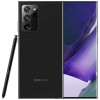Xiaomi ships are always popular for their excellent value for money. However, if you are familiar with Xiaomi's strategy, you should know that companies usually cut some features to save money. Take the Redmi K30 Pro, for example. This phone lacks a high refresh rate display, the most popular feature of 2020. They have now fixed the flaws of this new Redmi K30 Ultra with 120Hz refresh rate.
However, as mentioned above, the Redmi K30 Ultra comes with MTK Dimensity 1000 Plus instead of the Qualcomm Snapdragon 865 to keep the price low. So, to get a high refresh rate display, you need to use a MediaTek chip. But is there a balance between performance and price? Or is the Ultra a less powerful model at a better price than the K30 Pro?Let's check out the whole review-
Highlights-
* An AMOLED panel sports on the phone to enhance the viewing experience.
* As for the camera, there is a quad-camera setup on the rear panel.
* It copes up Mediatek chipset, known as Dimensity 1000+.
* A 4500 mAh battery with 33W fast charging support.
Design-
The glossy design of the back panel is on a different level.As per the camera,The redmi k 30 ultra supports quad-camera set up on the rear in a circular module with at the top of the center including a LED flash.The quad canera includes 64 MP main camera,13MP ultra-wide lens,5MP macro lens & 2Mp depth sensor. At the front, the selfie camera has a motorized pop-up selfie with 20 MP.This window is a great choice because it is unique and gives you more screen space. The front panel displays a 120Hz refresh rate.The K30 Ultra features a 6.67-inch FULL HD AMOLED display that's covered with Gorilla Glass 5 protection.This smartphone has 4,500 MAH battery & in-display fingerprint sensor.It also has VC Stereo-cooling system that helps to maintain the phone temperature in extreme conditions.
Like others,It has also volume & power button with card slot.It also has a type-c charging port below but this phone Doesn't belong any 3.5mm headphone jack.The physical dymansion of the smartphone meatures at 163.3mm(in length)/75.4mm(in width)/9.1mm(thin) & it weighs about 213gm. This smartphone is available in three colours.Those are -Moonlight White, Midnight Black, Mint Green.
Display,120Hz refresh rate-
Let's start with the improved appearance. It barely differs from the K30 Pro display except for the 120Hz refresh rate. It also supports HDR10 and P3 color gamut. Partial peak brightness is also 1200 nits.
Surprisingly, the K30 Ultra didn't run as smoothly as the Mi 10 Ultra when trying to play 4K HDR videos in full screen, which was a bit disappointing.This phone has a 120Hz screen. It seems that the chipset has changed slightly to provide very smooth playback.In addition, when playing 4K videos, the phone overheats a little and causes abnormal power consumption at times.
However, the SAMSUNG K30 Ultra display surprisingly offers the best picture clarity and detail when playing 4k video. It's not as smooth as the Mi 10 Ultra when playing 4K videos, but the quality is slightly better.HDR does a great job of rendering color and dynamic range very close to each other.
Another strange detail is the loss of an employee. On the K30 Ultra 120Hz display, dynamic app animations are not as smooth as expected. The animation responds quickly to user input, but there is a slight delay with noticeable loss of images. After several attempts, the frame loss problem disappeared with some apps running in the background. In particular, 120Hz displays and 240Hz system applications at the system level continue to provide fast responsiveness and relatively smooth operation.
Memory & Internal-
This user interface based on Android 10 MIUI 12 is powered by 7nm octa-core processor with embedded Mediatek Dimensity 1000 chipset. So you don't need to worry about processing speed, you can improve user experience with better user experience.
There are 4 types of memory that can be sold in the Chinese market. It includes 6 GB of RAM and 128 GB of storage in the base version. The other variant has 8GB of RAM, and the higher variants gradually increase the amount of memory. It has 8GB of RAM with storage options of 128, 256 and 512GB.
Performance-
I didn't expect the new MTK Dimensity 1000 Plus Chipset to deliver better performance. In theory, the 1000 Plus isn't as powerful as the Snapdragon 865, but it's still a great gaming option. Compared to the K30 Ultra, however, the difference in gaming performance is easy to see.
We personally think this is not a feature of the Dimensity 1000 Plus, but a matter of Xiaomi software optimization. The first Xiaomi 1000 Plus model, the K30 Ultra, is not very efficient. I believe we need to improve the overall thermostat and battery management.
Due to poor optimization, the K30 Ultra uses the 60fps limit in almost all games. Therefore, we cannot currently fully enjoy the gaming performance of the improved display. The good news is that Xiaomi has promised to fix the frame limiting issue and optimize the chipset's performance in a future K30 Ultra update.But no certain date was informed.
Anyway, let's see what happens in the tests. You have successfully activated the Dimensity 1000 Plus Prime performance in 3Dmark Ultra. The results are very similar to the K30 Pro. Ultra comes with LPDDR4X flash and UFS2.1 storage, while the K30 Pro has the latest generation of memory and storage. So, technically, the K30 Pro can perform better in terms of data transfer rates and systems. It's odd for Geek bench 5 that the Ultra doesn't run full benchmarks and produces no results. I don't think it makes sense to test a game on a model that is not currently optimized for the game, but it should perform well in at least a few games. This way you will understand why you are constantly saying that your phone needs better optimization.
In PUBG Mobile with the highest graphics settings, the phone activated 120 fps, but I was only able to start playing at an average speed of 60.21 fps.
In the Nimian Legends stress test, the model can start playback at an average of 39.6 frames per second. If you remember, it has a Dimensity 1000, but the iQOO Z1 with a higher 144Hz screen is much better for playing. So we don't think the chipset is a big limitation here. Even at 60 frames per second, the model got a little warm during the gaming test.
Camera Quality- Unexpectedly the most surprising thing about the K30 Ultra is the camera quality.
The 64MP main camera sports a Sony IMX682 sensor.We've seen with an example that the main camera can provide more accurate exposure, while the K30 Pro can sometimes overexpose and lose detail at extreme brightness. In particular, the Ultra main camera, which uses HDR and AI colors, can provide excellent dynamic range that can capture detail in both light and dark areas.
For example, the Ultra handles clear skies well, while the K30 Pro only loses the sky details. In addition, the Ultra lens has a relatively accurate white balance in most scenarios, while the K30 Pro's white balance is usually colder and not adequate for real-world scenarios.
Both K30 models are equipped with 13MP wide-angle cameras. The Ultra has a slightly narrower field of view, but a larger aperture. In Auto HDR mode, performance is similar to that of the main camera.
The ultra wide-angle samples have surprisingly much greater dynamic range than the Pro. White balance is also better known. With a larger aperture, Ultra seems to perform better at good brightness in low light conditions with the same recording settings as the K30 Pro. However, most wide-angle cameras have the same problem. Poor detail and unstable corner noise control.
The center image is always much better than the corners. Another advantage of Ultra over this is the ability to remove scratches from the edges. This is another highlight of the new camera combination.
Compared to Pro-Macro, Ultra has a faster focusing speed and slightly narrower focus. Ultra macro photography allows for more stunning colors. However, the macro only has a small 5MP sensor, making it less practical for use in low light conditions. Both only have electronic image stabilization but no OIS jitter solution, so both require an object.
For an evening show, it's really hard to pick a winner. Night mode is very similar to HDR mode.It is also not recommended to use a dedicated night solution for nighttime applications due to the recording options. ISO and shutter speed are not very different from those used in normal mode. Samples recorded in ultra night mode didn't really improve in terms of noise reduction and image detail. Xiaomi still seems to have a lot of work to do to fix Night Mode.
The edge detection and vertical camera distance detection is not as good as the Mi 10 Ultra. The aperture setting does not work, especially against a complex background.
Battery life & other features-
The phone powered by the 4500 mAh battery supported by the 33W wired fast charger and sum the Quick Charge 4+ and Power delivery technology for better charging.
Ultra and Pro use the same 4500mAh battery charging solution, but the full charge test shows that the Ultra charging efficiency is all slightly improved.The Ultra took about 66 minutes to fully charge, the Pro took a little longer to charge, and finally, testing took about 74 minutes. Overall, the K30 Ultra has several improvements over the K30 Pro.
Another Ultra improvement is the dual stereo speakers. The sound improvement over the individual Pro speakers is impressive, but not as good as the Mi 10 balanced speakers Xiaomi Redmi K30 Ultra, has a trendy aspect, under-display fingerprint sensor, latest comms, NFC, and has decent sound quality.
Pros-
* Large battery with a decent fast charging option
* High-end performance chipset
* Studio level sound quality
* Thin Bezels on the screen
* 120 Hz refresh rate
Cons-
* The risk to damage Pop up camera
* Low brightness configuration
* No wireless charging and reverse charging
* No 3.5mm jack
Verdict-
The Xiaomi Redmi K30 Ultra is one of the affordable 5G phones released this year.Compared to the Pro version, it has an increased refresh rate, 1000 size and faster loading. The rest of the characteristics remained unchanged.
Overall, the K30 Ultra has several improvements over the K30 Pro. This is one of the best options in the price range. However, for a product that is celebrating its 10th anniversary, improving daily life is not as important as we expected. It looks like an unfinished product that could potentially offer a better user experience in areas like 120Hz displays and new chipset optimizations. On the other hand, the camera performance is surprisingly impressive compared to the K30 Pro.Redmi's parent company Xiaomi is also launching an affordable 5G phone. Of course, Redmi will follow. The appearance of the K30 Ultra on the global market is still a mystery.
1- 5000 | 5000-10000 | 10000-15000 | 15000-20000 | 20000-25000 | 25000-30000 | 30000-40000 | 40k-50k | 50k-100k | 100k-300k
Related Reviews
 The Samsung Galaxy Note series has always been the smartphone of most professionals, myself included. I was originally connected and haven't been able to walk since then. With Note devices, you feel like you can do whatever matters. And that's the feeling I got again after holding the Samsung Galaxy Note 20 Ultra 5G in my hand. But worth Rs 1 Lakh+ money, is this phone worth it? Read the review forBangla....English
The Samsung Galaxy Note series has always been the smartphone of most professionals, myself included. I was originally connected and haven't been able to walk since then. With Note devices, you feel like you can do whatever matters. And that's the feeling I got again after holding the Samsung Galaxy Note 20 Ultra 5G in my hand. But worth Rs 1 Lakh+ money, is this phone worth it? Read the review forBangla....English  Vivo has recently launched a mid-range segment in August 2020. And It's a Y-series(20) smartphone. Before this Y20,Vivo has already launched a lot of Y series phone at a very affordable price such as Y50, Y11, Y90 etc. This time we are going to see what new or special features Vivo has added. With Vivo Y20, Vivo also has launched another model of Y series that is named Y20i. This two phonesBangla....English
Vivo has recently launched a mid-range segment in August 2020. And It's a Y-series(20) smartphone. Before this Y20,Vivo has already launched a lot of Y series phone at a very affordable price such as Y50, Y11, Y90 etc. This time we are going to see what new or special features Vivo has added. With Vivo Y20, Vivo also has launched another model of Y series that is named Y20i. This two phonesBangla....English  Tecno's popular series of smartphones 'Tecno Spark 6 Air' has been launched in Bangladesh which is a low budget phone. Officially, the sale of the phone has already started in the market. The last few days I have been using this phone. And I have found the similarity of the Tecno Pouvier 4 with the phone in use. The key is to buy the phone that will attract the buyers. But theBangla....English
Tecno's popular series of smartphones 'Tecno Spark 6 Air' has been launched in Bangladesh which is a low budget phone. Officially, the sale of the phone has already started in the market. The last few days I have been using this phone. And I have found the similarity of the Tecno Pouvier 4 with the phone in use. The key is to buy the phone that will attract the buyers. But theBangla....English  Technological advances are making cell phones smarter every day. But the price went up too! If you want to buy a smartphone at an affordable price with modern features, don't miss to check out the realme 7 series! Recently, Realme has launched a new smartphone in its Realme 7 series - the Realme 7i. The new budget Realme smartphone joins the Realme 7 and the Realme 7 Pro devices that were launchedBangla....English
Technological advances are making cell phones smarter every day. But the price went up too! If you want to buy a smartphone at an affordable price with modern features, don't miss to check out the realme 7 series! Recently, Realme has launched a new smartphone in its Realme 7 series - the Realme 7i. The new budget Realme smartphone joins the Realme 7 and the Realme 7 Pro devices that were launchedBangla....English  Technological advances are making cell phones smarter every day. But the price went up too! If you want to buy a smartphone at an affordable price with modern features, don't miss the Realme C series! Having opened in the local market in Bangladesh in February 2020 with the launch of realme C2, the pioneering realme brand surprised us with a wide range of high-end phones at a reasonable price range. In thisBangla....English
Technological advances are making cell phones smarter every day. But the price went up too! If you want to buy a smartphone at an affordable price with modern features, don't miss the Realme C series! Having opened in the local market in Bangladesh in February 2020 with the launch of realme C2, the pioneering realme brand surprised us with a wide range of high-end phones at a reasonable price range. In thisBangla....English 
